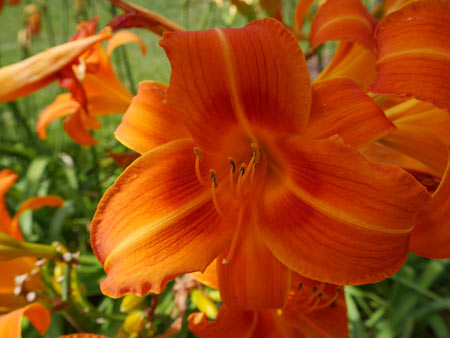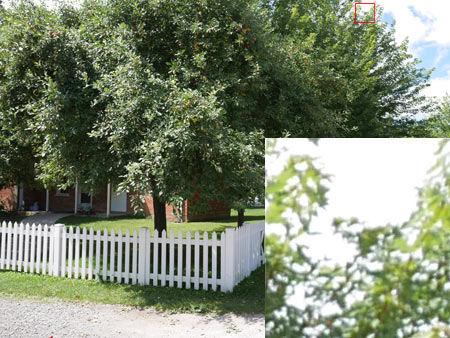Review Date: August 22, 2013
Category: Serious to Advanced Amateur

Photoxels Editor’s Choice – Enthusiast Interchangeable Lens Camera
IMAGE QUALITY
The Panasonic Lumix DMC-GX7 is a compact mirrorless Interchangeable Lens Camera targeted to serious and advanced (“enthusiast”) photographers. It has 16MP resolution on a Four Thirds (17.3 x 13.0 mm) Live MOS image sensor, built-in Sensor-shift Image Stabilization, and accepts interchangeable lenses on the Micro Four Thirds mount.
The Panasonic Lumix DMC-GX7 has excellent image quality including very good low-light performance at ISO 200 with good detail preserved. Image quality is very good up to ISO 1600, and ISO 3200 is very usable. At higher ISOs, images suffer from noise and loss of detail.
| LUMIX G VARIO 14-42mm 3x Optical Zoom |
|
 |
 |
| Wide-angle 14mm (28mm, 35mm equivalent) |
Telephoto 42mm (84mm, 35mm equivalent) |
One of the many advantages of an ILC camera is the ability to use interchangeable lenses suited to specific jobs. The Panasonic Lumix DMC-GX7 comes with a LUMIX G VARIO 14-42mm F3.5-5.6 ASPH. MEGA O.I.S. (35 mm equivalent focal length: 28-84 mm) 3x zoom kit lens which has 7 circular blades, a minimum aperture of F22, and accepts 46mm diameter filters. In the above pictures, we show the coverage for 14mm [28mm equiv.] then 42mm [84mm equiv.].
The Panasonic Lumix DMC-GX7 has full exposure flexibility with PASM modes, and Program Shift.
The camera also provides exposure compensation (with Auto Bracketing) and Custom (Manual) White Balance. A Histogram can be displayed in both Live and Playback modes.
The actual macro capability is a function of the lens you use. The 14-42mm kit lens allows you to focus as close as 0.2m/0.66ft (between 14-20mm) and 0.3m/0.98ft (between 21-42mm).
The AF Area can be manually moved to anywhere (and we mean, anywhere, to the very edge) on the screen. AF is very fast in good light, takes about 1 sec. in very low light.
There are three metering modes: Multiple / Center Weighted / Spot. Since the LCD is touchscreen, Touch AE allows you to specify where you want the camera to measure the light.
| Auto White Balance Indoors | |
 |
 |
| AWB | Custom WB |
As the above two pictures show, the Auto White Balance (AWB) is not quite accurate indoors under artificial lighting [I have two energy-saving fluorescent light bulbs on the ceiling]. The Panasonic Lumix DMC-GX7 allows WB to be set manually and this brings out the real colors. AWB works very well in natural light.
| ISO Comparisons | |
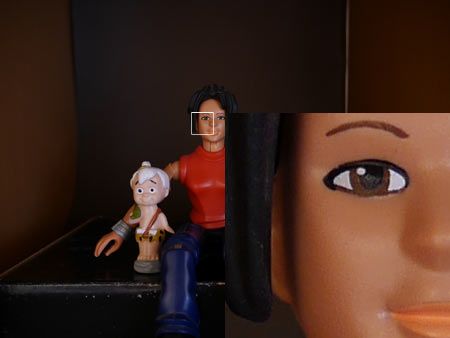 |
|
| ISO 200 | |
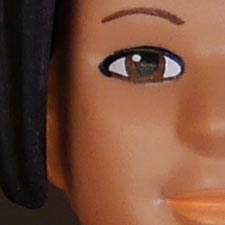 |
 |
| ISO 400 | ISO 800 |
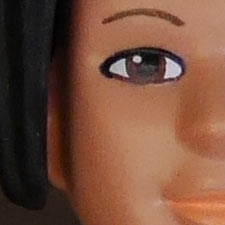 |
 |
| ISO 1600 | ISO 3200 |
 |
 |
| ISO 6400 | ISO 12800 |
 |
|
| ISO 25600 | |
The Panasonic Lumix DMC-GX7 has 8 or 22 ISO settings, depending on whether you choose 1 EV or 1/3 EV ISO steps in Custom Menu [MENU – Rec – ISO Increments] going from ISO 200 to ISO 25600, plus extended ISO 125. The 100% crops above (area delimited by the white square) demonstrate the noise at the available ISO Speeds (in 1 EV ISO steps). At ISO 200 to 800, noise is under control. Noise starts to be slightly visible at ISO 1600 but is still very acceptable. Noise (with progressively higher detail loss) is quite visible at higher ISOs. Overall, very good noise handling.
CA is not much of a problem, even in high contrast shots, using the 12-42mm kit lens. We had to look very hard to find anything remotely worth showing. The corner delimited by the red square at top right, and reproduced at 100% crop at bottom right, would normally show CA but shows none.

Long Exposure - 14mm (28mm), P, Spot, 60 sec., F13, ISO 200, Custom WB, Self-timer (2 sec.), Tripod Used
Our Long Shutter Speed test is a torture test for digital cameras. Here we test whether (and how well) a camera can lock focus, provide accurate WB and obtain a correct exposure in extreme low light situations. The GX7 passes the test easily.
The Panasonic Lumix DMC-GX7 allows the use of a long shutter speed of up to 60 sec., therefore allowing nice night photography. Generally, with image sensors, noise usually becomes more prominent at slow shutter speeds.
To test this noise reduction algorithm, we take a low-light indoors shot. Usually I have to experiment quite a bit to obtain the optimum exposure, but with the GX7, I simply set it to P mode, use Program Shift to select a shutter speed of 60 sec. and let the camera decide which aperture to use. The picture is slightly underexposed (which can easily be fixed in Photoshop). The AF locked without any problem, though I switched to manual focus and used Focus Peaking to finess the focus. Even at this long shutter speed, the Panasonic Lumix DMC-GX7’s noise reduction seems to be working great, producing a nice smooth blurring effect of the background.
Overall, the Panasonic Lumix DMC-GX7 has excellent image quality including very good low light capability, making it an easy choice for an ideal enthusiast compact mirrorless interchangeable lens camera. Touch AE and Touch Af make it just a matter of pointing the finger to lock exposure and focus on the exact part of the scene you want. It is these kinds of practical and intuitive features that make it easier (and more enjoyable) to capture great shots.
View the Panasonic Lumix DMC-GX7 Photo Gallery [In the Photo Gallery, click on the picture of the camera to return here.]
Next: Panasonic Lumix DMC-GX7 Handling & Feel



